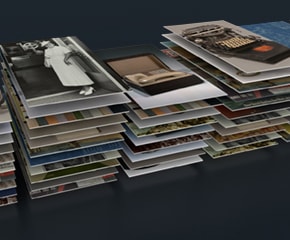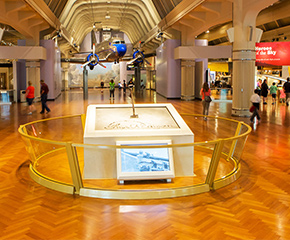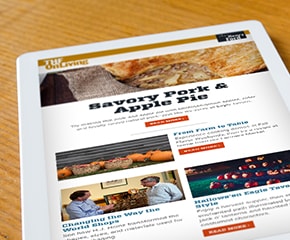
The Wright Brothers and the Bicycle Business
10 artifacts in this set
This expert set is brought to you by:
The staff at The Henry Ford
Wright Cycle Shop, Original Site, Dayton, Ohio, circa 1910
Photographic print
The Wright brothers moved their bicycle business to five different Dayton, Ohio, locations from 1892 to 1908. They occupied this building, at 1127 West Third Street, from 1897 to 1908. It was here that the brothers conducted their first serious aviation experiments and built their gliders and the 1903 Wright Flyer -- the first successful heavier-than-air powered aircraft.
Lathe, Used by the Wright Brothers, circa 1895
Lathe
The Wright brothers' bicycle shop contained several large power tools primarily used for making and repairing bikes. Some were also used to build their early gliders and airplanes. The shop building did not have electricity, so the Putnam lathe, Crescent band saw and Barnes drill press were powered by overhead belts and shafts connected to a single-cylinder gas engine.
Wright Cycle Shop
Store
Wilbur and Orville Wright operated their bicycle business in this building from 1897 to 1908 in Dayton, Ohio. The brothers sold and repaired bikes, and they even produced models under their own brands. It was also in this shop that the Wright brothers built their earliest flying machines, including the 1903 Flyer that became the first successful heavier-than-air, powered, controlled aircraft.
Drill Press, Used by the Wright Brothers, circa 1895
Drill press
The Wright brothers' bicycle shop contained several large power tools primarily used for making and repairing bikes. Some were also used to build their early gliders and airplanes. The shop building did not have electricity, so the Putnam lathe, Crescent band saw and Barnes drill press were powered by overhead belts and shafts connected to a single-cylinder gas engine.
Van Cleve Bicycle, Made by the Wright Brothers circa 1896
Bicycle
Wilbur and Orville Wright established their first bicycle shop in 1892. They started building their own bikes in 1896. Van Cleve bicycles -- named for Wright family ancestors -- used high-grade materials, and they featured special oil-retaining wheel hubs and coaster brakes of the brothers' own design. The Wrights built each bike to order, hand-making parts with basic tools.
Catalog for Van Cleve Bicycles, Wright Cycle Company, 1900
Trade catalog
Wilbur and Orville Wright established their first bicycle shop in 1892. They started building their own bikes in 1896. Van Cleve bicycles -- named for Wright family ancestors -- used high-grade materials, and they featured special oil-retaining wheel hubs and coaster brakes of the brothers' own design. The Wrights built each bike to order, hand-making parts with basic tools.
Bicycle Spokes, Used by the Wright Brothers, Dayton, Ohio, circa 1900
Bicycle Spoke
Wilbur and Orville Wright ran their bicycle business from 1892-1908. Wright Cycle Company operated at five different Dayton, Ohio, locations before settling at 1127 West Third Street in 1897. The Wrights sold and repaired bikes, and they carried a full line of cycling accessories and supplies. For a few years, the brothers even built bicycles under their own brands.
St. Clair Bicycle Made by the Wright Brothers, 1897-1901
Bicycle
After their 1901 glider didn't perform as expected, Wilbur and Orville Wright modified a bicycle to test the data used to shape their wings. Riding the bike generated a breeze that simulated the air pressure against a wing in flight. Although this St. Clair bicycle was built by the Wrights, it is not the actual bike used in their experiments.
Orville Wright and Edwin H. Sines in Wright Cycle Shop, Dayton, Ohio, 1897
Photographic print
Orville Wright, at right, works alongside friend and former schoolmate Edwin H. Sines in the Wright brothers' Dayton, Ohio, bicycle shop. The Wrights' experiences building printing presses and bicycles sharpened their skills in precision machining. These talents were invaluable in their later work to build the first successful heavier-than-air, powered aircraft in 1903.
Band Saw, Used by the Wright Brothers, circa 1899
Band Saw
The Wright brothers' bicycle shop contained several large power tools primarily used for making and repairing bikes. Some were also used to build their early gliders and airplanes. The shop building did not have electricity, so the Putnam lathe, Crescent band saw and Barnes drill press were powered by overhead belts and shafts connected to a single-cylinder gas engine.


